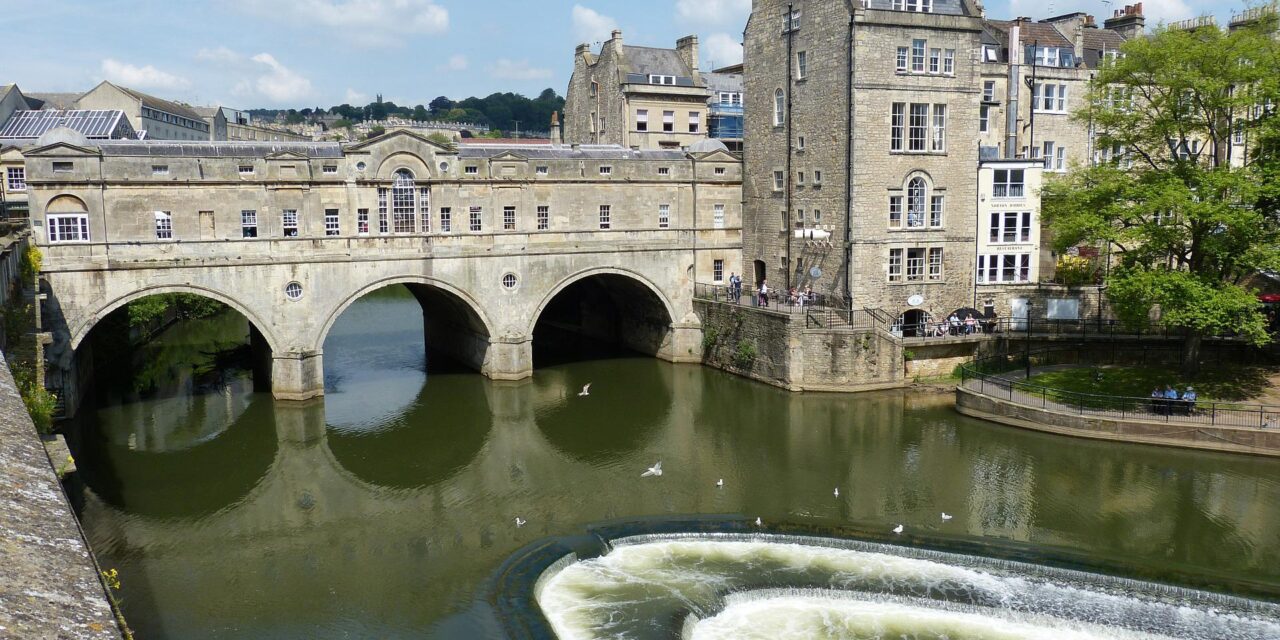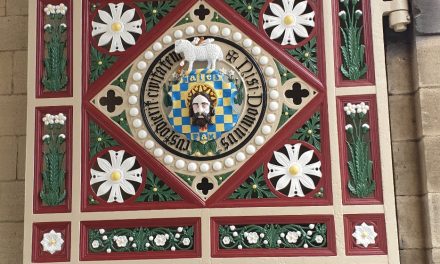Bath
Bath first appears in FTHM Edition 85
The lovely city of Bath is to be found in the county of Somerset, England in the Avon Valley. It is 97 miles west of London and 11 miles southeast of Bristol and is named after the Roman-built baths. Bath attracts up to 1,000,000 staying visitors each year and 3,800,000 day-visitors and offers many attractions like the Abbey, the Royal Crescent, spas and Parade Gardens and can be viewed from bus and canal boat tours. The city is relatively small in size as it only covers 11 square miles.
Bath has a fascinating history which was heavily influenced by the Romans who, amongst other things, in 60 AD, built baths and a temple in the valley of the River Avon. However, human activity in the hills at Bathampton Down has been detected earlier than this, which date back to the Mesolithic age. It is also thought that the site of the Roman baths’ main spring may have been a shrine for the Britons and was dedicated to the Goddess Sulis which explains the town’s earlier name of Aquae Sulis (“the water of Sulis”). The Romans were also clever enough to construct a bathing complex over 300 years in the city.
With the demise of the Romans in the first decade of the 5th century, much fell into disrepair like the baths which were eventually lost due to rising water and silting. Interestingly, 30,000 silver Roman coins from the 3rd century were discovered in 2012, 450 ft from the Roman baths, during an archaeological dig.
In 500 AD, Bath is thought to have been the site of the Battle of Badon when King Arthur is believed to have defeated the Anglo-Saxons, and then in 577 AD, the town was captured by the West Saxons. Significantly, a monastery was founded by Osric, King of the Hwicce in 675 AD, and then King Offa of Mercia took control of it in 781 AD and rebuilt the church dedicating it to St Peter.
Bath looked very different from the 9th century onwards, as there was a loss of the Roman street pattern and the town had become a royal possession with King Alfred reorganising the layout. Edward the Elder helped organise the town’s economy by minting coins in Bath and then in 973 AD, Edgar of England was crowned king of England in Bath Abbey and set a precedent for all future coronations – it is worth noting that the fabulous Bath Abbey which was originally founded in the 7th century was rebuilt in the 12th and 16th centuries and is today a major attraction in the city.
1088 AD, saw the sacking of Bath during the Rebellion and following this John Tours was granted control of the town, abbey and mint and eventually became Bishop of Bath. Also new baths were built around the three springs in the town and later on ‘the hospital of baths’ was built for their health-giving properties and also to provide poor people with shelter. It is worth stating that Bath began to prosper around this time with wealthy merchants building the first guildhall in the 13th century and, by 1590 AD, after Elizabeth I granted it a Royal Charter, it became a city and attracted many members of the aristocracy.
But, during the English Civil War, Bath was easily taken by parliamentary forces and became part of the New Model Army under William Waller until it was retaken by royalists in July 1643. Once the status quo was restored, several areas of the city were developed (during the Stuart period) and more building work was undertaken to satisfy visitor demand. The layout of the streets was designed by John Wood the Elder and his son and they transformed Bath using Bath stone.
In the early 18th century, the first purpose-built theatre was constructed and later rebuilt as the Theatre Royal, and of course, Bath became a very fashionable spa town attracting many notable and wealthy visitors. According to the census of 1801, Bath had become one of the largest cities in Britain with over 40,020 people living there. In modern times, an interesting historical fact is that Emperor Haile Selassie of Ethiopia spent 4 years in exile in Bath from 1936 – 1940.
Obviously, Bath didn’t escape the ravages of the Second World War, and during the Baedeker Blitz, 400 people were killed and more than 19,000 buildings were destroyed or damaged. This was followed by a Post-War clearance and redevelopment of the city in a style that was very unlike the existing Georgian one – much of it was council housing. However, in 1987, the city was selected by UNESCO as a World Heritage Site because of its international cultural significance.
The city has witnessed major redevelopment since 2000, which has included: the Southgate Shopping Centre and the Thermae Bath Spa – in 2021, Bath became part of a second UNESCO World Heritage Site which consists of a group of spa towns across Europe that are known as the “Great Spas of Europe”.
It is true to say that the economic sectors in Bath have changed like in many other British cities. In the past, it was involved in things like furniture manufacture, printing, quarries and Plasticine production. It is now involved in software development, publishing and other service-orientated industries. Major employers are the NHS, the two universities, the Bath and North East Somerset Council and the Ministry of Defence. Happily, it is experiencing growing employment in information and communication technologies and the creative and cultural industries.
But one cannot understate the role of tourism in Bath’s economy today, and, in fact, there is much to see like the Roman Baths, the Royal Crescent, the Thermae Bath Spa and, of course, the lovely Georgian architecture and the Roman archaeological sites in the central area of the city. Of course, Bath Abbey is a must-see for any visitor. As mentioned, much of what Bath has to offer can be experienced from open top bus tours, tours on foot and by river. There are over 80 hotels and bed and breakfasts available and also many excellent restaurants, pubs and bars to enjoy.
On a cultural level, Bath has much to offer like the many annual festivals it holds and places to visit like the Victoria Art Gallery, the Jane Austen Centre, the Fashion Museum and, of course, the Roman Baths. There are many beautiful parks in the city including the Royal Victoria Park, Parade Gardens and Alice Park.
If you like sport, you will like what Bath has to offer including rugby union, football, cricket, swimming, athletics, netball, hockey etc. Or if you prefer to shop, why not visit one of the modern shopping centres or maybe one of the many artisan shops at Walcott Street. You could also sample local food like the Sally Lunn Buns which are a delicious type of teacake.
Also, if you are thinking of doing a degree in the future why not consider going to the University of Bath or Bath Spa University, or if you want to progress in further education, you could attend Bath College or Norland College?
Because of the large number of overseas visitors to Bath, it is not surprising that it benefits mutually by being twinned with Aix-en-Province (France), Alkmaar (Netherlands), Braunschweig (Germany) and Kaposvar (Hungary).
Bath is a relatively small city but is linked by the A4 road to Bristol and to many other rail stations in the South of England, so it is perfectly accessible by rail, road and is connected to Bristol and the sea by the River Avon. If you fancy a new adventure, then do pay a visit to Bath!
* With a lot of help from Wikipedia – More from Dean’s Places here




Recent Comments